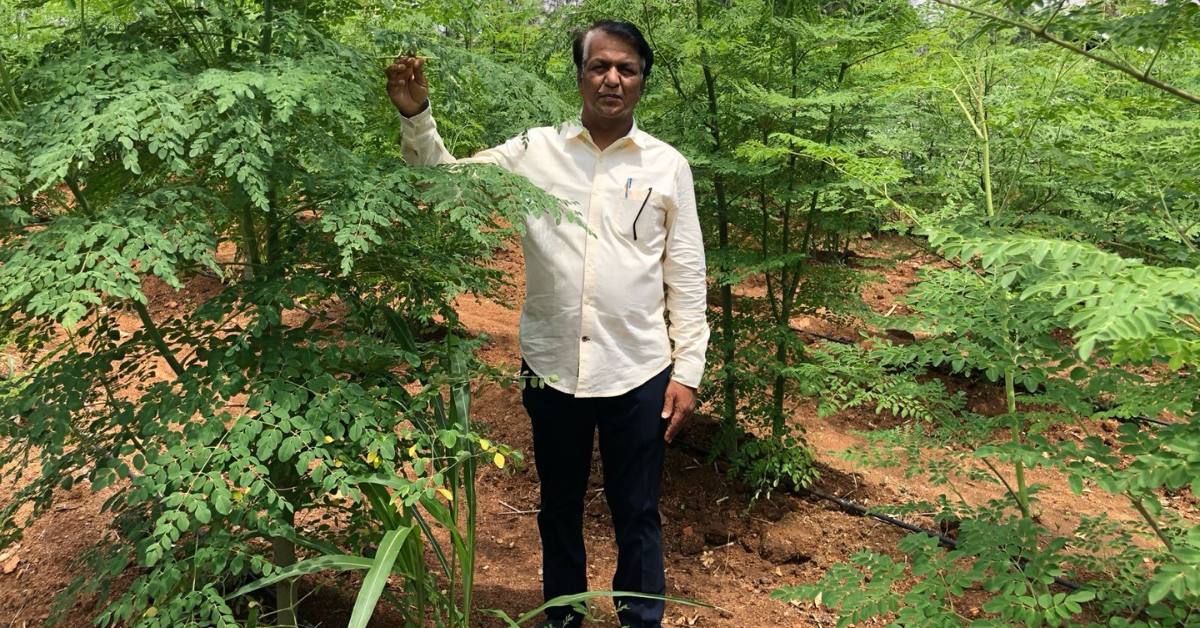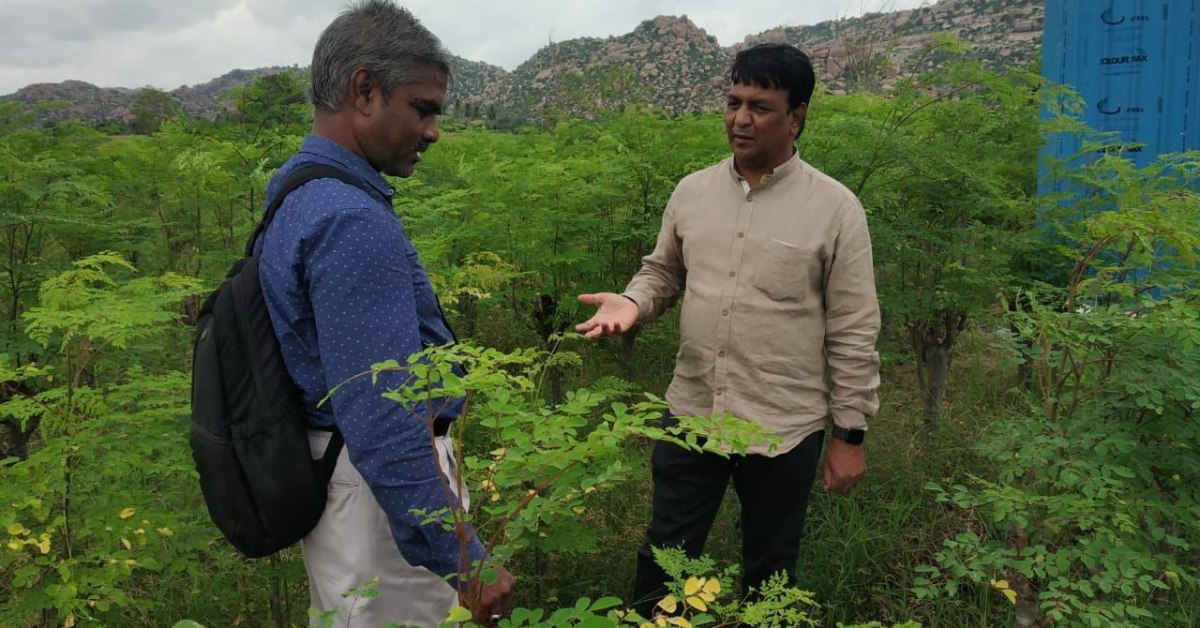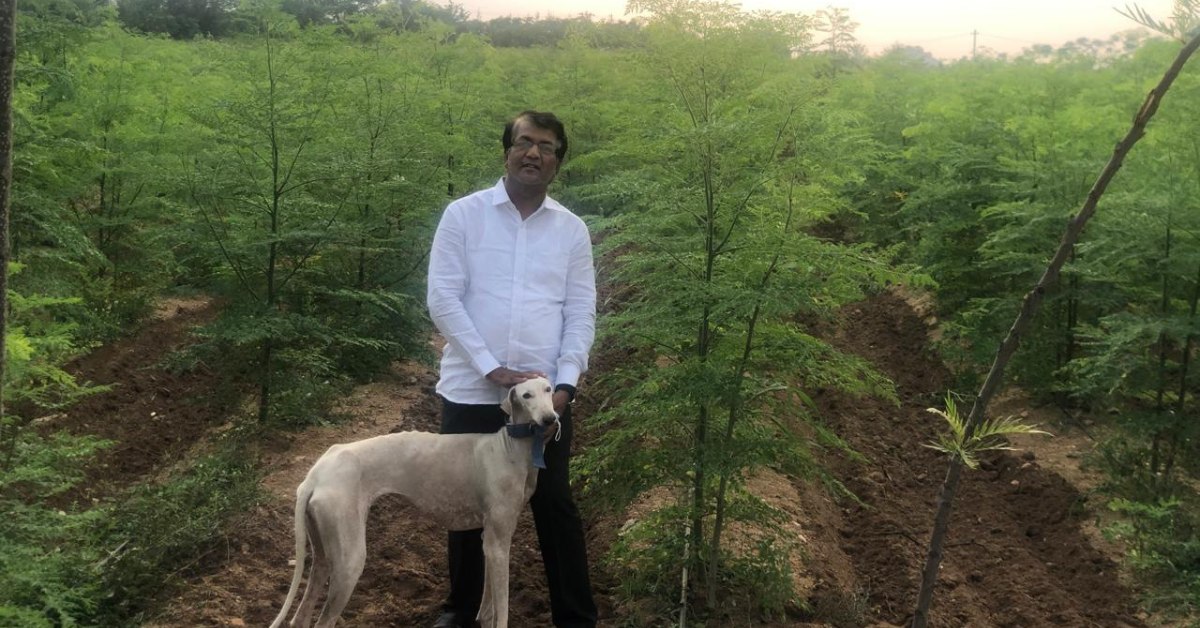How This Man Fought Koppal’s Malnutrition With Moringa & Built a Rs 5 Cr Annual Business
In the arid area of Koppal in Karnataka, the land has long been dry, the summers harsh, and the children thinner than they should be. For decades, this district quietly carried a grim label — one of the worst-hit regions for poverty and malnutrition, not just in India, but globally.
But for Basaiah Hiremath, this wasn’t just another news report. It was home.
Working a well-paying job in the United States, Basaiah stumbled upon a global survey that named Koppal as one of the poorest-performing districts for child nutrition. It shook him. “It wasn’t just data. It was my childhood, my neighbours, my roots,” he would later say.
What followed wasn’t a burst of outrage or a public campaign; it was a well-thought-out decision. He packed up his life abroad and came back home.
Finding answers in an ancient tree
Back in Koppal, Basaiah turned to research. He wasn’t looking for temporary fixes or charity handouts. He was looking for something deeper that could be sustainable and lead the village towards a healthy and dignified path.
 Early batches of moringa powder were distributed free to nearby villages to fight malnutrition.
Early batches of moringa powder were distributed free to nearby villages to fight malnutrition.
His answer came from a source so ordinary, it had almost been forgotten: the moringa tree, known in local tongues as “munga” or “sahjan”. Grown in backyards for generations, moringa had always been around — its leaves tossed into dal or dried for herbal remedies. But science had caught up with tradition. Moringa, as Basaiah learned, is a powerhouse of nutrients: 46 antioxidants, 36 anti-inflammatory agents, high levels of iron, calcium, and vitamins.
For centuries, it had nourished quietly. Basaiah wondered if it could do so again — but this time, intentionally. Watch here how he did it.
He started with barren land and a lot of hope
He invested rupees two crore of his own money to build a fully organic moringa farm on land where little else grew. It wasn’t easy. The soil was parched, and scepticism ran high. But Basaiah wasn’t discouraged. Slowly, he began cultivating moringa, tending to the trees with care and building a small team.
When the first harvest came in, he didn’t sell it. He processed the moringa into powder, which is easy to consume, rich in nutrition, and distributed it for free in neighbouring villages. The idea was simple: feed the community first, build the business later.
 Over 100 local farmers have been trained to grow, process, and earn from moringa cultivation.
Over 100 local farmers have been trained to grow, process, and earn from moringa cultivation.
Within a few months, local health officials began to notice something remarkable: a drop in cases of malnutrition, especially among children. The changes weren’t dramatic, but they were real. Children were more energetic. Their immunity was stronger.
And for the first time in a long time, Koppal had a story to celebrate.
Empowering farmers, not just feeding families
Soon, district officers approached Basaiah, urging him to scale up. But he didn’t want to simply run a large farm. He wanted others to own the transformation, too.
So he began training local farmers, helping them grow moringa on unused land and showing them how to dry, process, and sell it. What began as one man’s experiment grew into a network of empowered cultivators, many of them small-scale farmers who had never dreamed of earning a steady income.
Today, Basaiah’s enterprise earns over Rs 5 crore annually — but for him, the bigger success is the self-reliance it has seeded across villages.
 Moringa leaves contain 46 antioxidants and more iron than spinach — grown here on land once considered infertile.
Moringa leaves contain 46 antioxidants and more iron than spinach — grown here on land once considered infertile.
Ask Basaiah what drives him, and he’ll tell you this: it was never about awards or recognition. It was about coming full circle. Giving back not with sympathy, but with solutions.
“Nutrition is dignity,” he says. “When you help a child grow stronger, when a mother doesn’t have to worry about her next meal, that’s the real return on investment.”
In a world chasing innovation, he found his answer in an old tree with deep roots. And through it, he gave his community something that had been missing for far too long — nourishment, yes, but also hope.
News